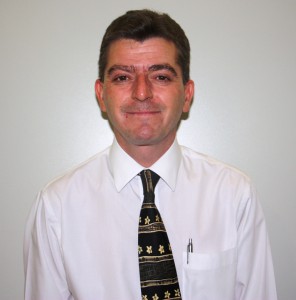20th December 2014 Colombo, Sri Lanka
The Asian Tsunami: A Volunteer’s Tale
For our fourth blog in the series, we look in house. Gary Leslie, currently Head of UK Trade and Industry at the High Commission, but in 2004 based in London, was in the first team of Foreign and Commonwealth Office volunteers to be deployed to Sri Lanka. Here is his story.

On the morning of 26 December 2004, the world learned a new Japanese word in the most unfortunate circumstances. It is a word no one in Sri Lanka or other affected countries would ever forget. Tsunami. Literally, a harbour wave but in reality, a tidal wave.
As part of the Foreign and Commonwealth Office’s Rapid Deployment Team, I was sent to Sri Lanka on the first available flight to help with the rescue operation. Twelve of us arrived early in the morning of 27 December and headed straight to the High Commission, then on Galle Road, to help. My first memory is the traffic from the airport to Colombo. There was no expressway back then and our coach took hours to wind its way through the clogged roads to central Colombo.
We immediately set to work, manning phones, trying to contact registered British citizens to check on their well-being. By the time we arrived, the staff of the High Commission, together with volunteer spouses and assorted family members, had been under severe pressure handling not only telephone enquiries but also the steady stream of walking wounded and dispossesed UK citizens, mainly tourists, who had somehow made their way to Colombo from damaged resorts around the coast.
The following morning, four of us set off in two Land Rovers to drive as far around the coast as we could. Our objective was to assist and evacuate as many distressed British Nationals as possible. Loaded up with food provisions for personal sustenance, a fistful of dollars and accompanied by four hastily chartered coaches, we set off not knowing what we would find.
Initially, things went smoothly. The first hotels we visited on our way South had suffered only minor flooding. But by the time we reached Galle that evening the scale of the death and destruction had become all too apparent. We had witnessed the attempted clear up of the world’s worst rail disaster in which more than 1,700 people died – the train, the Queen of the Sea line, was swept off the rails and inland, drowning the passengers and those local residents who had climbed on to the carriages hoping to escape the water. The pitiful food provisions we had packed were left with survivors who now owned nothing more than the clothes they stood in.
The Galle Fort itself was relatively unscathed with only minor flooding having breached the walls. Outside the Fort, in Galle town, things were very different. Many of the buildings had been destroyed and there were thousands of deaths. The four coaches were quickly filled with injured and displaced people of all nationalities and dispatched to the Emergency Reception Centre in Colombo, the drivers promising to return the next day.
The next morning we headed off along the southern coast with the coaches back in convoy seeing destroyed village after village, town after town. Perhaps the worst affected area we came across was Weligama. Words cannot describe what had taken place. The only sight I have seen which remotely resembled it is the site of the atomic explosion in Hiroshima.

By this time, the fistful of dollars had long gone on shopping trips inland for food and water for survivors. Nevertheless, thanks to the generosity of restaurateurs and hoteliers who fed and hosted us for free on my word that the High Commission would reimburse them at some future point, we managed to carry on the evacuation exercise as far as Yala National Park, where more scenes of horror and total devastation awaited us.
Despite the horrors of the tsunami aftermath, one of my abiding memories is of the kindness and generosity shown to us by the communities along the coast. They had very little, but what they had they were willing to share with strangers who had come to try and help, but who were overwhelmed by what they found. That kindness and generosity in utter adversity was why I was delighted to return to Sri Lanka earlier this year, this time with my family, in much happier circumstances.
Other Blogs in this series: